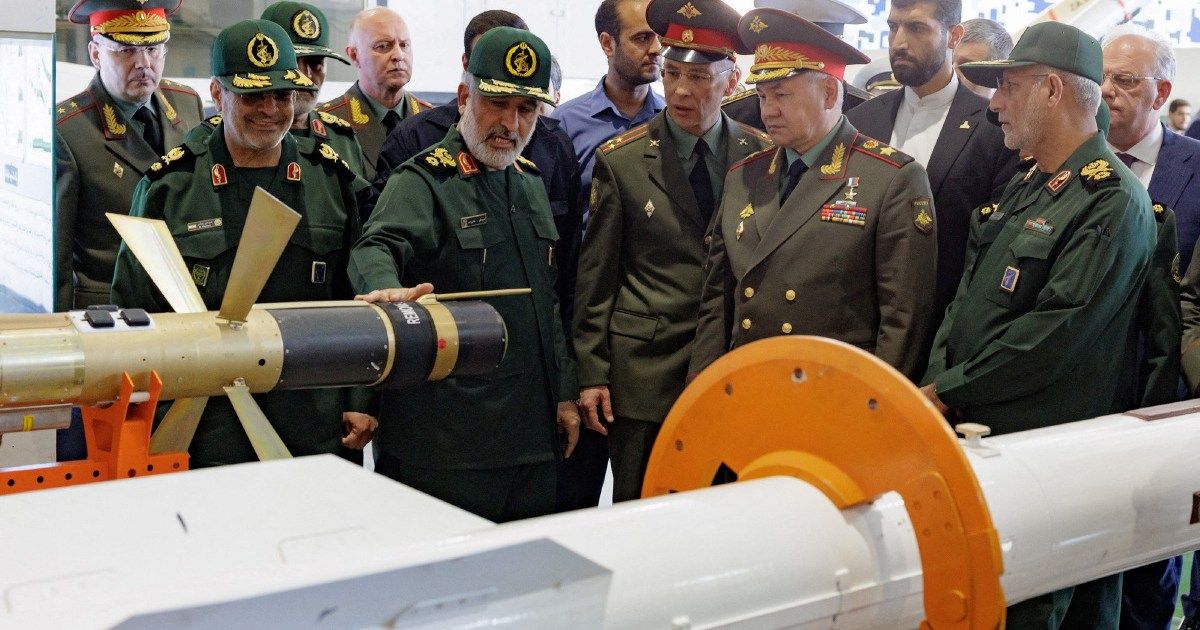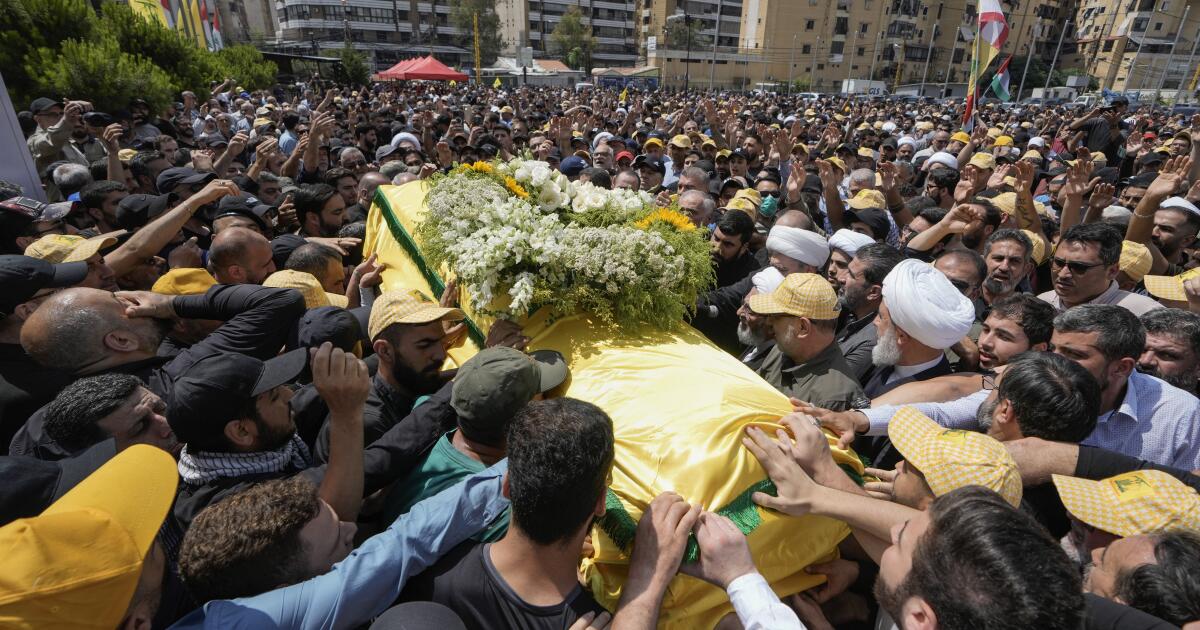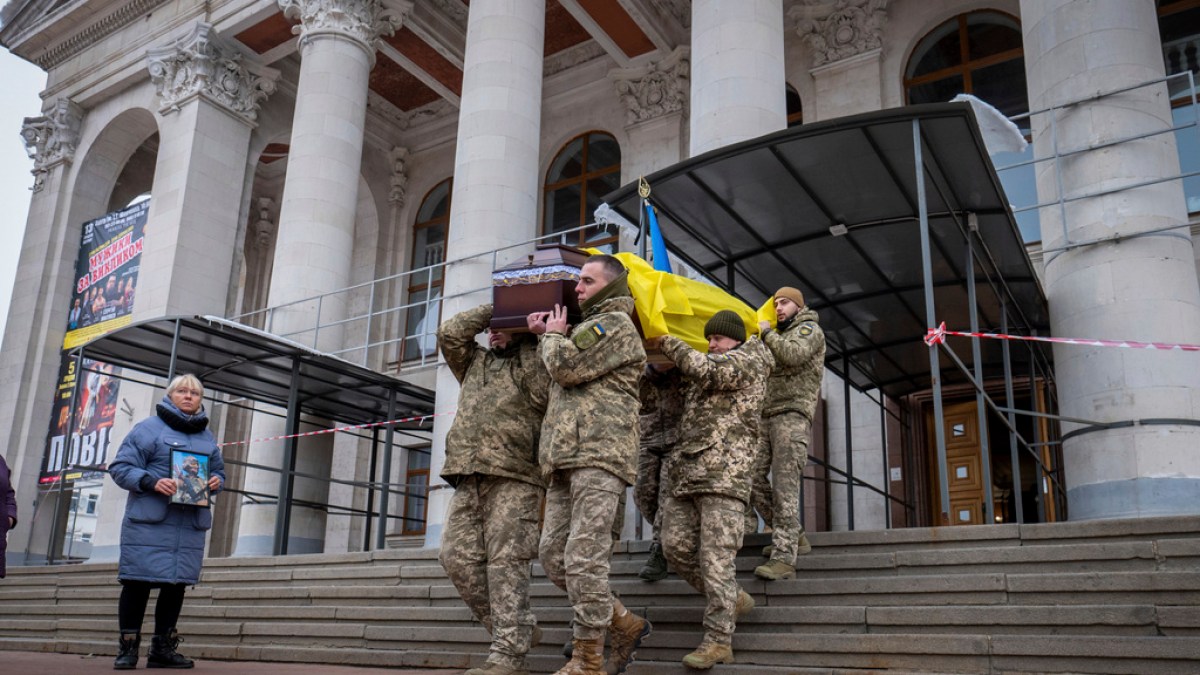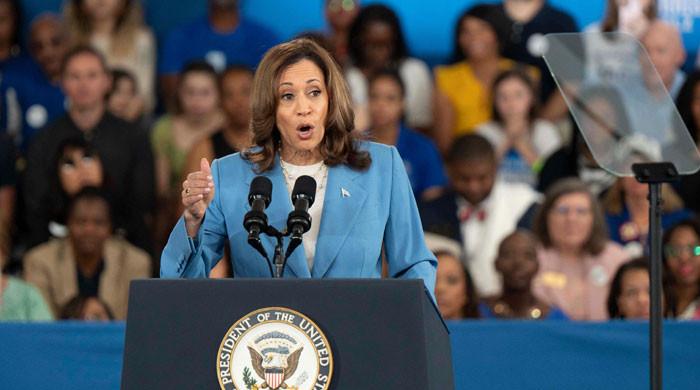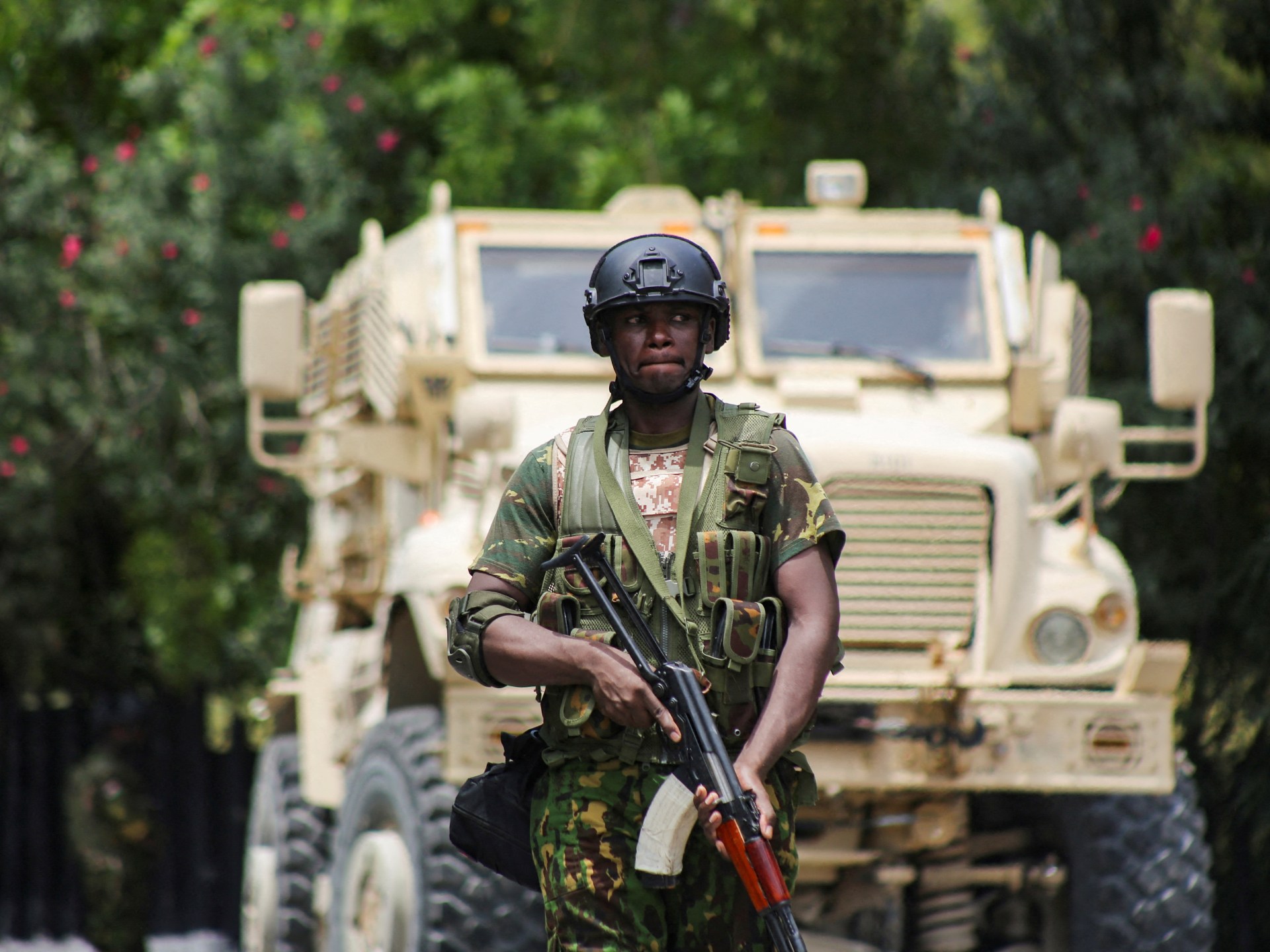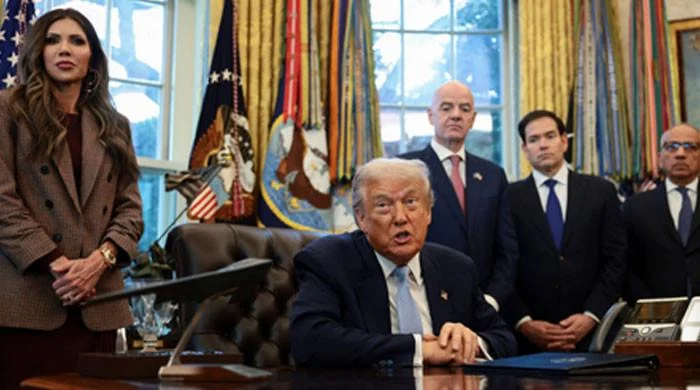Tehran, Iran – Ukraine's Western allies say Iran has sent short-range ballistic missiles to Russia in a major escalation, a claim Tehran has rejected as “completely baseless and false” and pointed to what it sees as Western hypocrisy.
The United States, Britain, France and Germany imposed new sanctions on Iran on Tuesday over what they called an “escalation” decision by Tehran. They provided no evidence and the weapon has not yet been seen on the battlefield.
Tehran has described the latest sanctions against Iranian companies and individuals as “economic terrorism.”
However, the Kremlin has not refuted the reports, instead calling Iran an “important partner.”
What is the significance of missiles?
Western allies have accused Iran of delivering to Russia some 200 Fath-360 ballistic missiles that could be used in Ukraine in the coming weeks. Russia has been waging war with Ukraine, which is supported by the West, since 2022.
The satellite-guided missile, also known as the BM-120, is a single-stage, solid-propellant, surface-to-surface ballistic missile that can be launched from canisters of up to six rounds mounted on the back of trucks.
The range is just 120 km (75 mi) and it can carry a payload of up to 150 kg (330 lb), with top speeds reaching Mach 4, four times the speed of sound, or about 4,900 kilometres per hour (3,050 mph). The missile is believed to be accurate to within less than 30 metres (98 ft).
This weapon alone is unlikely to change the course of a war, but it could help Russia better manage its offensive on Ukrainian soil. The Fath-360 has often been compared to the US-made HIMARS systems that Ukraine has been using against Russian forces.
As the US has also noted, Iranian missiles could be deployed to hit targets closer to the front lines, allowing Russia to reserve its own precision-guided munitions for targets deeper inside Ukraine's borders.
Since shortly after the start of the war in 2022, Iran has also been accused of sending explosive-laden drones to Russia and helping train Russian forces and set up a drone production line, and Ukraine has shown parts of drones destroyed on battlefields as evidence.
For its part, Iran has said it sold drones to Russia, but this happened “months” before the start of the war. It has also emphatically denied sending missiles on multiple occasions since Western officials first made the claim in late 2022, and the Foreign Ministry on Wednesday vowed to respond to sanctions.
Would sending missiles violate Iran's nuclear deal?
The nuclear deal Iran signed with world powers in 2015 to win relief from United Nations sanctions in exchange for curbs on its nuclear program also included missile provisions.
As part of the deal's sunset clauses, a long-standing conventional arms embargo on Iran expired in October 2020. Other restrictions on Iran's missile program expired in October 2023, but the United States and the European Union maintained their own sanctions to pressure Iran's arms industry.
Technically, there are no international legal obstacles preventing Iran from sending ballistic missiles.
But UN Security Council Resolution 2231, which underpins the nuclear deal, used the G7-created Missile Technology Control Regime (MTCR) to define the prohibitions imposed on Iran as part of the arms embargo. Russia and China are partners in the MTCR, but the regime imposes no legally binding obligations.
Category I of the MTCR stipulates that acceding states must not export missiles and drones with a range of more than 300 km (186 mi) and a payload exceeding 500 kg (1,100 lb).
The Fath-360 falls comfortably within the Category I boundaries, which could mean that, if the allegations are true, Iran is acting cautiously by not sending longer-range missiles. Previous reports had speculated that Tehran could be sending ballistic missile variants with ranges of up to 700 kilometers (435 miles) that could travel well beyond Ukraine.
Limiting the range of exported missiles could protect Iran from the nuclear deal’s “snapback” mechanism that could reinstate all UN Security Council sanctions against Iran. If longer-range missiles were exported, the E3 could argue that Iran is in violation of Category I Resolution 2231, which expires in October 2025.
Western allies have not reported sending missiles with longer ranges or heavier payloads to the Russian military, despite earlier speculation that Tehran could be sending ballistic missile variants with ranges of up to 700 kilometers that could travel well beyond Ukraine.
Would missile exports to Russia make strategic sense for Iran?
Iran's President Masoud Pezeshkian and his cabinet came to power with the support of Supreme Leader Ayatollah Ali Khamenei, though they stressed they want greater diplomatic engagement with the West and negotiations to lift sanctions.
Russia has also stirred the waters in Iran by supporting Azerbaijan's Turkey-backed plan to establish the controversial Zangezur Corridor, which would link mainland Azerbaijan to Nakhchivan via Armenia and cut a vital export line to Europe for Iran.
For these two reasons, a decision by Iran to send missiles to Russia would not seem to make strategic sense, according to Hamidreza Azizi, a visiting researcher at the German Institute for International and Security Affairs (SWP).
But beyond the timing, the Iran expert told Al Jazeera that Tehran may be hoping to finally receive the advanced Russian Su-35 fighter jets it has said it wants to acquire, while it looks to other military technology and joint weapons production with Russia.
“In addition, Iran and Russia have been cooperating in other strategic areas, such as space and nuclear programs. Iran could also seek to deepen collaboration in these areas. Therefore, while the timing may be questionable, these broader factors could be driving Iran’s incentives to move forward with missile deliveries,” Azizi said.
What do we know about the latest Western sanctions against Iran?
In response to what they called a “dramatic escalation,” the US and the E3 have further increased sanctions on Iranian civil aviation, blacklisting the flagship carrier Iran Air and cutting off its access to Europe.
Citing a “direct threat to European security,” the E3 said it would seek to designate entities and individuals involved with Iranian weapons programs.
The United States and the United Kingdom have blacklisted three senior military officials who have allegedly been involved in arms exports to Russia, along with four Iranian entities, including the organisation that runs the Anzali Free Trade Zone in northern Iran. Five Russian ships and three Russian aircraft units have also been placed on the list.
Did the US withdrawal from the nuclear deal bring us here?
Iran's landmark 2015 nuclear deal has been in limbo for years since Washington unilaterally abandoned it in 2018 and imposed the toughest sanctions in history against Iran that remain in place to this day.
But that move, and the “maximum pressure” policy of former President Donald Trump’s administration, which his predecessor Joe Biden has largely continued, prompted Iran to turn increasingly toward Russia and China.
Iran and Russia have also been cooperating in Syria, working for more than a decade to keep President Bashar al-Assad's government in power.
Iran and China signed a 25-year cooperation agreement in 2021, but no major deals have been announced as part of the deal. However, China remains the largest buyer of Iranian crude despite sanctions.
On the other hand, the Russian invasion of Ukraine has prompted Moscow to look for new partners.
U.S. pressure on Iran has been a “major factor” driving closer cooperation with Russia, and the withdrawal from the nuclear deal was a “key moment” that pushed Iran to pursue a “look east” policy, Azizi said.
The expert said Iran and Russia share a desire to challenge US influence and hegemony globally, but this does not amount to a formal military or economic alliance, even though there have been agreements.
“There is no mutual defence pact or binding agreement that, for example, would commit Russia to defend Iran in a conflict, nor are there any concrete agreements in other strategic areas,” he said.
“The strategic partnership agreement, which is reportedly in its final stages, is expected to focus more on generalities than specific mutual commitments. While their growing cooperation undoubtedly presents challenges for the United States and Europe, it is important not to overstate the relationship as a formal alliance. Still, both countries appear eager to continue expanding their cooperation.”

